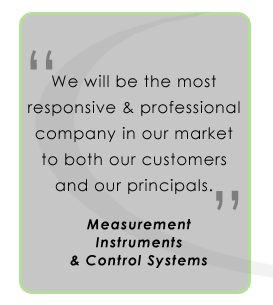|
WIKA - Pt100 and Pt1000 Sensors: Important Facts and Differences
October 2020
MARIETTA, GA ~
Many industries use RTDs for measuring temperature, and the sensor in the majority of those devices are either the Pt100 or Pt1000. These two temperature sensors have similar characteristics, but their difference in nominal resistance may determine which one you choose for your application.
Resistance temperature detectors (RTDs), also called resistance thermometers, are popular temperature measurement devices due to their reliability, accuracy, versatility, repeatability, and ease of installation.
The basic principle of an RTD is that its wire sensor – made of a metal with a known electrical resistance – changes its resistance value as the temperature rises or falls. Although resistance thermometers have certain limitations, including a maximum measuring temperature of about 1,100°F (600°C), overall, they are the ideal temperature measurement solution for a multitude of processes.
Why Use a Platinum Sensor
The sensing wires in an RTD can be made of nickel, copper, or tungsten, but platinum (Pt) is by far the most popular metal used today. It’s more expensive than other materials, but platinum has several characteristics that make it particularly well suited for temperature measurements, including:
Almost linear temperature–resistance relationship
High resistivity (59 Ω/cmf compared to 36 Ω/cmf for nickel)
Non-degradable electrical resistance over time
Excellent stability
Very good chemical passivity
High resistance to contamination
The Difference Between Pt100 and Pt1000 Sensors
Among platinum RTD sensors,
Pt100 and Pt1000 are the most common. Pt100 sensors have a nominal resistance of 100Ω at ice point (0°C). Pt1000 sensors’ nominal resistance at 0°C is 1,000Ω. Linearity of the characteristic curve, operating temperature range, and response time are the same for both. The temperature coefficient of resistance is also the same.
However, due to the different nominal resistance, readings for Pt1000 sensors are higher by a factor of 10 compared to Pt100 sensors. This difference becomes evident when comparing 2-wire configurations, where lead measurement error is applicable. For instance, the measurement error in a Pt100 could be +1.0°C, and in the same design a Pt1000 could be +0.1°C.
How to Choose the Right Platinum Sensor
Both types of sensors work well in
3- and 4-wire configurations, where the additional wires and connectors compensate for the effects of the resistance of the lead wires on the temperature measurement. The two types are also similarly priced. Pt100 sensors, however, are more popular than the Pt1000 for a couple of reasons:
A Pt100 sensor comes in both
wire-wound and thin-film constructions, offering users choice and flexibility. Pt1000 RTDs are almost always only thin-film.
Because their use is so widespread across industries,
Pt100 RTDs are compatible with a large range of instruments and processes.
So, why would someone opt for the Pt1000 sensor instead? Here are the situations where the greater nominal resistance has the clear advantage:
A Pt1000 sensor is better in 2-wire configurations and when used with longer lead wire lengths. The fewer the number of wires and the longer they are, the more resistance is added to the readings, thereby causing inaccuracies. The Pt1000 sensor’s greater nominal resistance compensates for these added errors.
A Pt1000 sensor is better for battery-operated applications.
A sensor with a higher nominal resistance uses less electrical current and, therefore, requires less power to operate. Lower power consumption extends battery life and the interval between maintenance, reducing downtime and costs.
Since a Pt1000 sensor uses less power, there is less self-heating. This means fewer errors in the reading as a result of higher-than-ambient temperatures.
In general, Pt100 temperature sensors are more commonly found in process applications, while Pt1000 sensors are used in refrigeration, heating, ventilation, automotive, and machine building applications.
For help or advice when purchasing or replacing RTDs, contact the temperature measurement experts at WIKA USA about the relative merits of the Pt1000 and Pt100 sensors.
|




